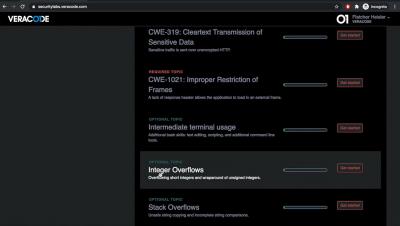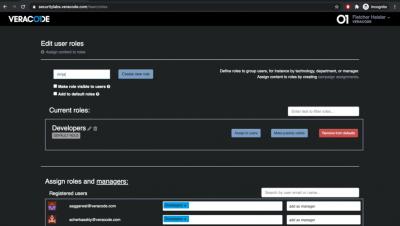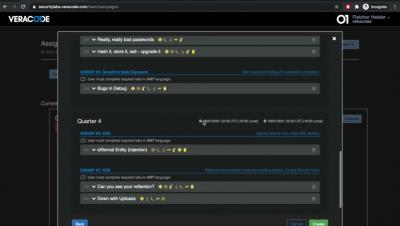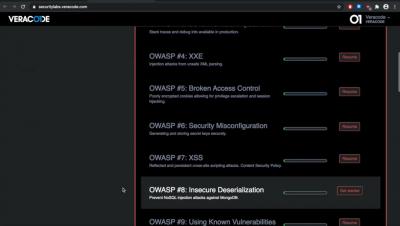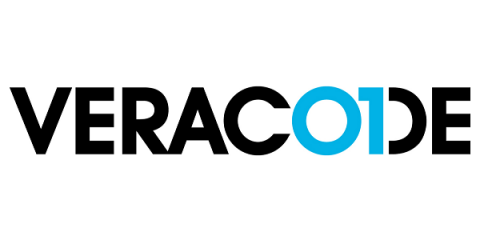Security | Threat Detection | Cyberattacks | DevSecOps | Compliance
Veracode
Edit and Assign Security Labs Roles to Users
Create a Campaign and Assign Content to Roles in Security Labs
Add and View Due Dates for Assignments in Security Labs
View and Report on User Progress in the Veracode Security Labs Reporting Page
Customize Lab Content in Veracode Security Labs
DevSecOps in Practice: How to Embed Security into the DevOps Lifecycle
You’ve heard of DevOps. And by now, you’ve probably also heard of DevSecOps, which extends DevOps principles into the realm of security. In DevSecOps, security breaks out of its “silo” and becomes a core part of the DevOps lifecycle. That, at least, is the theory behind DevSecOps. What’s often more challenging for developers to figure out is how to apply DevSecOps in practice. Which tools and processes actually operationalize DevSecOps?
The First Step to Achieving DevSecOps Is Shifting Security Culture Left
To achieve DevSecOps you need to shift security left. Sounds simple, right? Well, it’s easier said than done. A recent survey conducted by SANS Institute found that 74 percent of organizations are deploying software changes more than once per month – an increase in velocity of nearly 14 percent over the past four years. To release software monthly, weekly, or even daily, security has to be integrated into the development process, not tacked on at the end.
The Biggest Breaches and Data Leaks of 2020
Year after year, cyberattackers cause unnecessary stress for organizations, disrupting innovation and impacting profit. 2020 was no different – last year brought a bevy of damaging breaches that cost organizations precious money and time they couldn’t get back. Ranging from thousands to billions of records exposed, breaches big and small gave threat actors access to sensitive information like email addresses, locations, passwords, dates of birth, and more.
DevSecOps and the Cloud: How Leaning on Your Cloud Provider Can Help You Shift Left
Over the past several years, an increasing amount of organizations have been moving their applications from on-premises to cloud-hosted platforms. And with the current pandemic forcing most businesses to adopt a fully remote work environment, the cloud is even more appealing. Gartner reported that cloud spend rose by double digits in 2020, and it’s expected to continue to grow by 18.4 percent in 2021.


